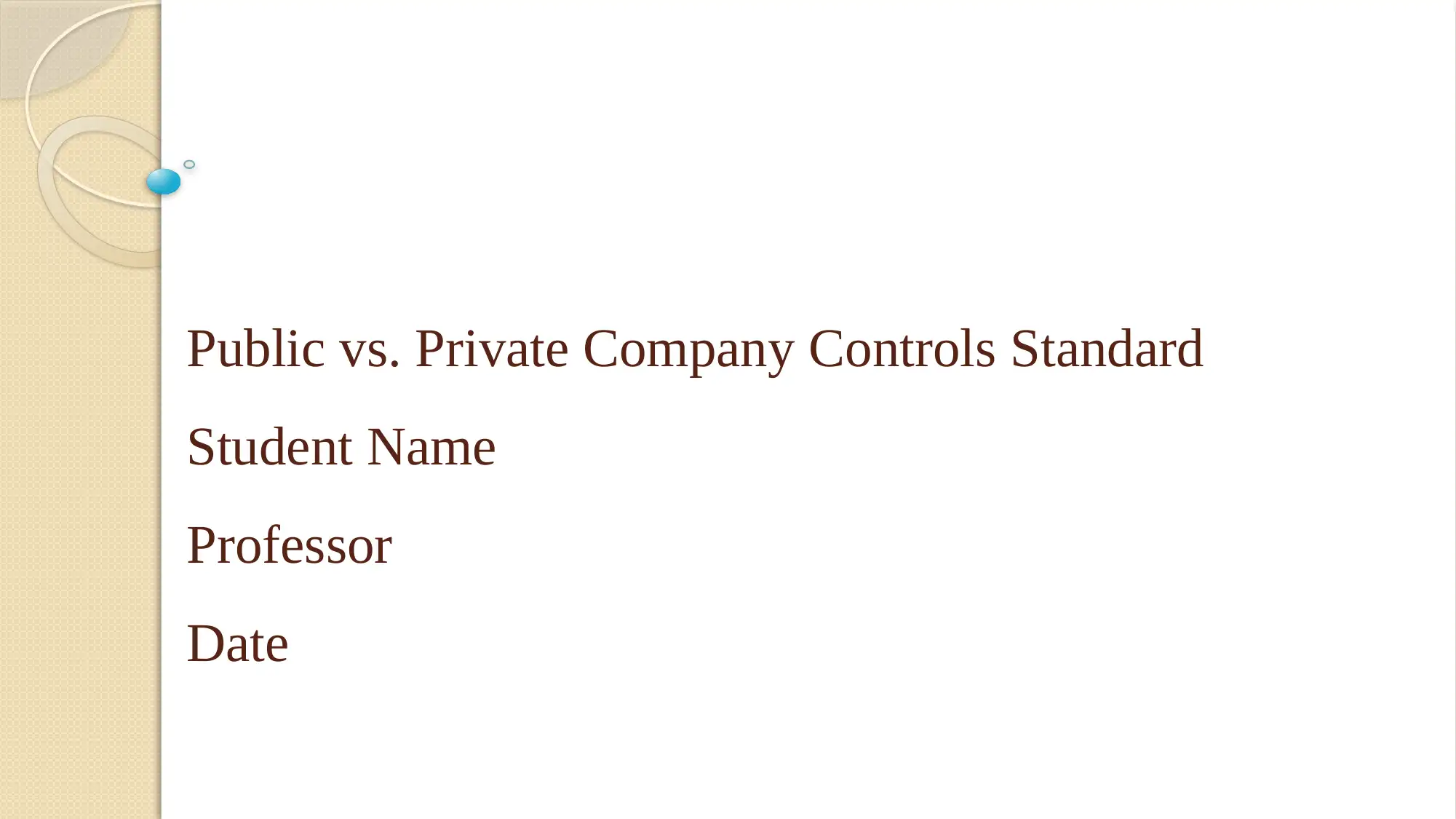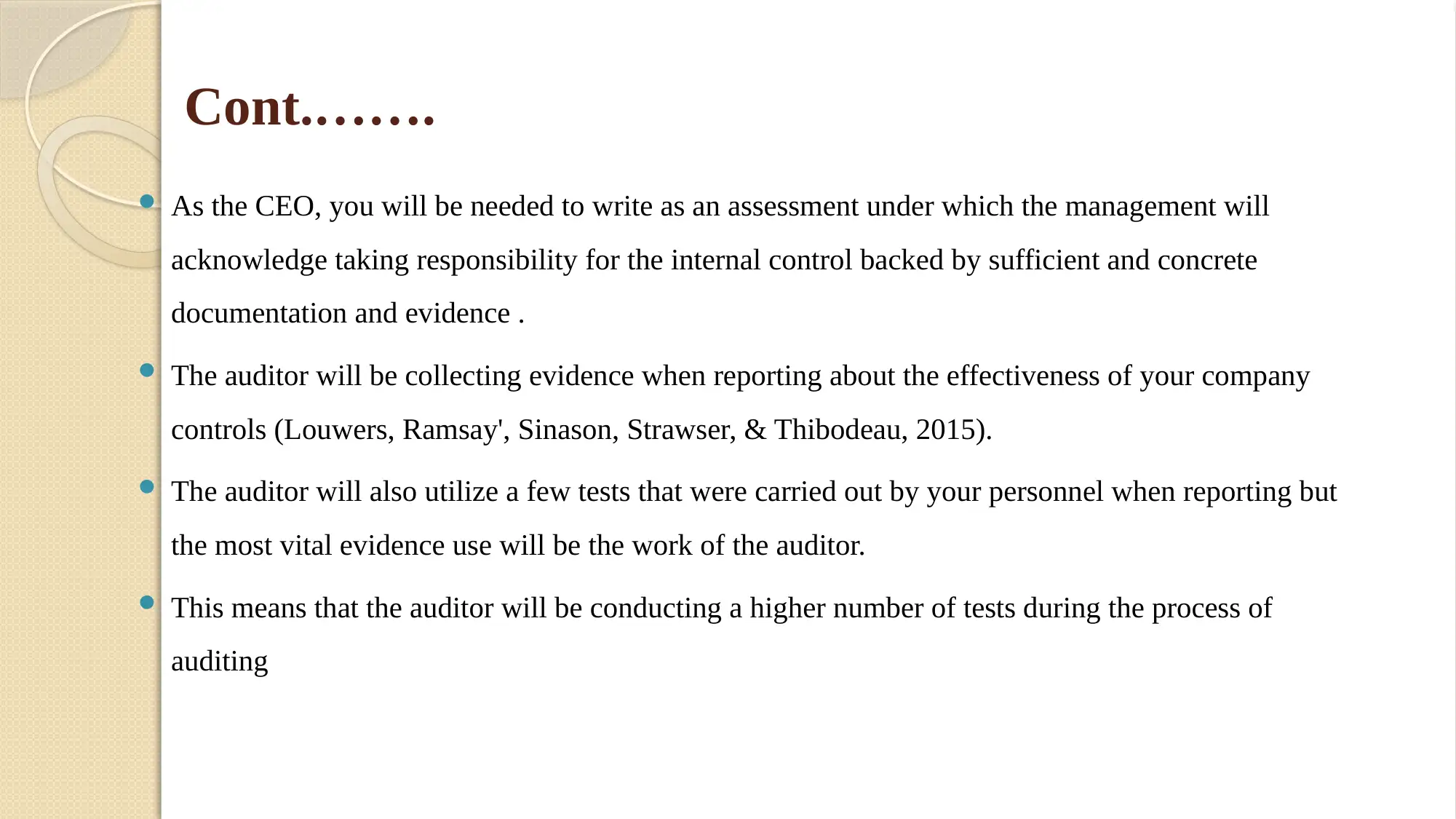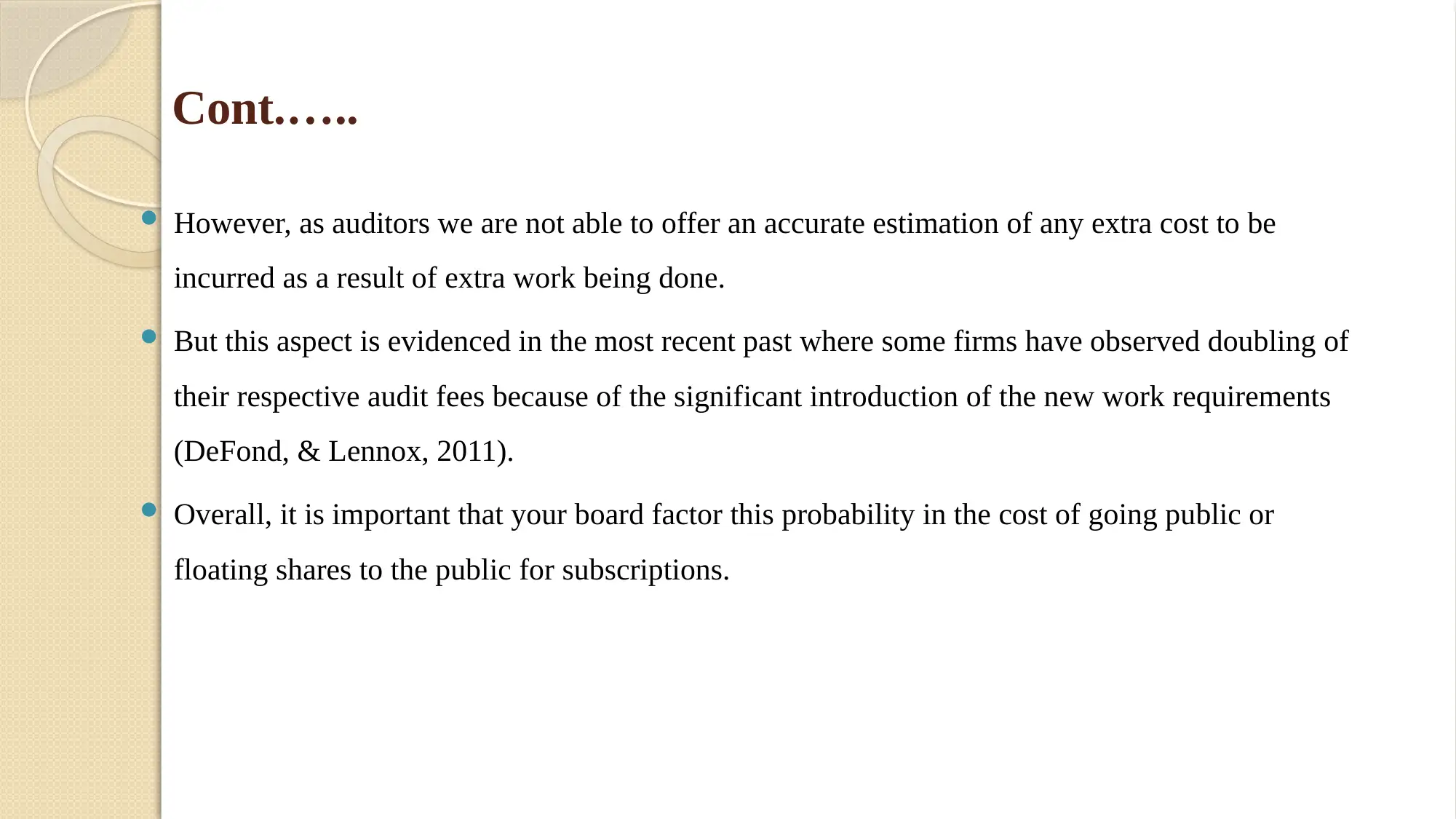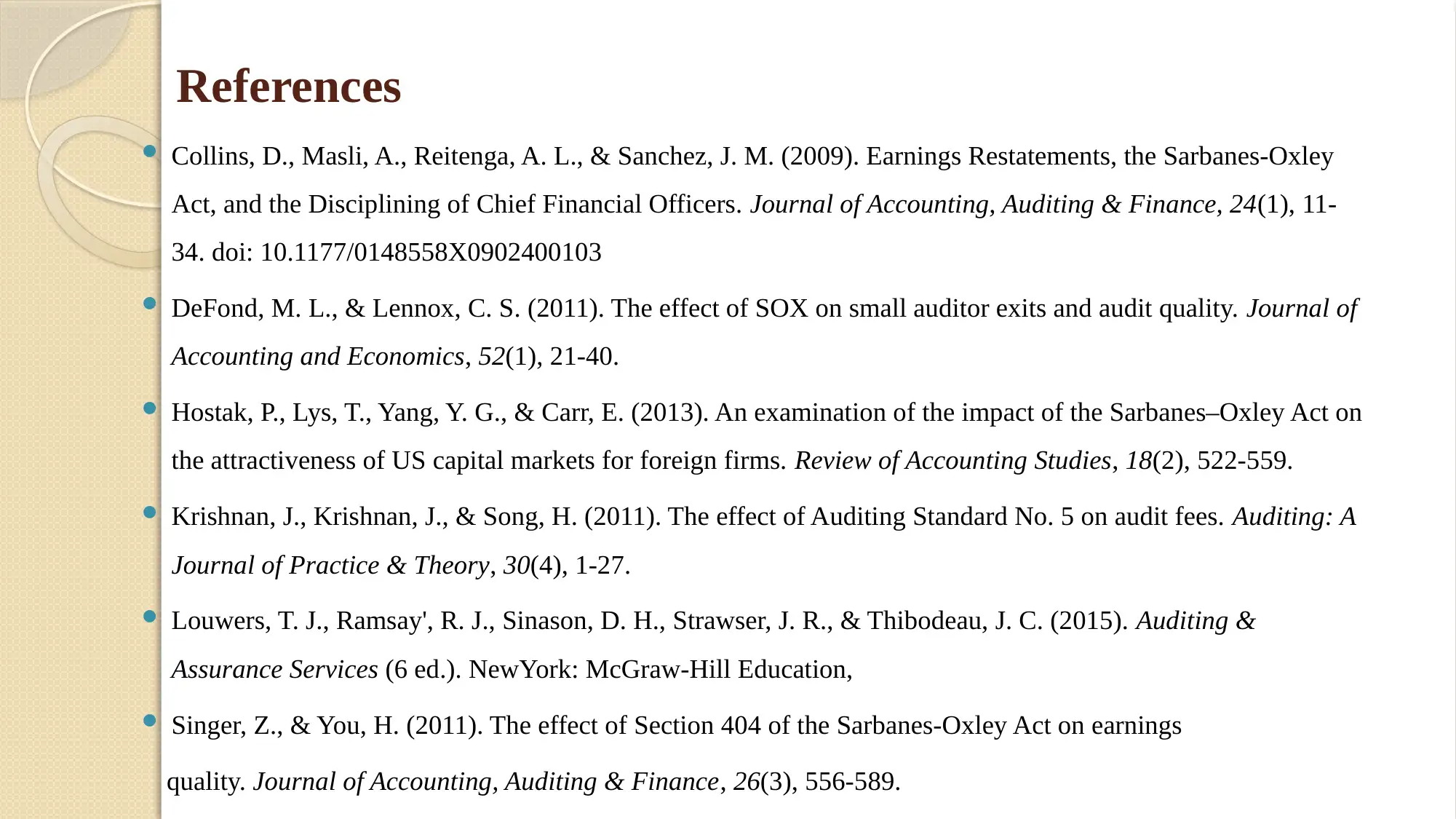Public vs. Private Company Controls and SOX Audit Requirements
VerifiedAdded on 2021/05/31
|6
|764
|120
Report
AI Summary
This report examines the implications of the Sarbanes-Oxley Act (SOX) on public and private companies, focusing on the increased costs and responsibilities associated with going public. It highlights the importance of internal controls, management's role in testing and documenting these controls, and the auditor's role in assessing their effectiveness. The report discusses how SOX and PCAOB standards affect both management and auditors, including the need for internal control reports and auditor opinions on control effectiveness. It also touches upon the potential for increased audit fees due to the added requirements. The references cited provide additional context on earnings restatements, SOX's impact on audit quality, and the attractiveness of US capital markets for foreign firms.
1 out of 6










![[object Object]](/_next/static/media/star-bottom.7253800d.svg)